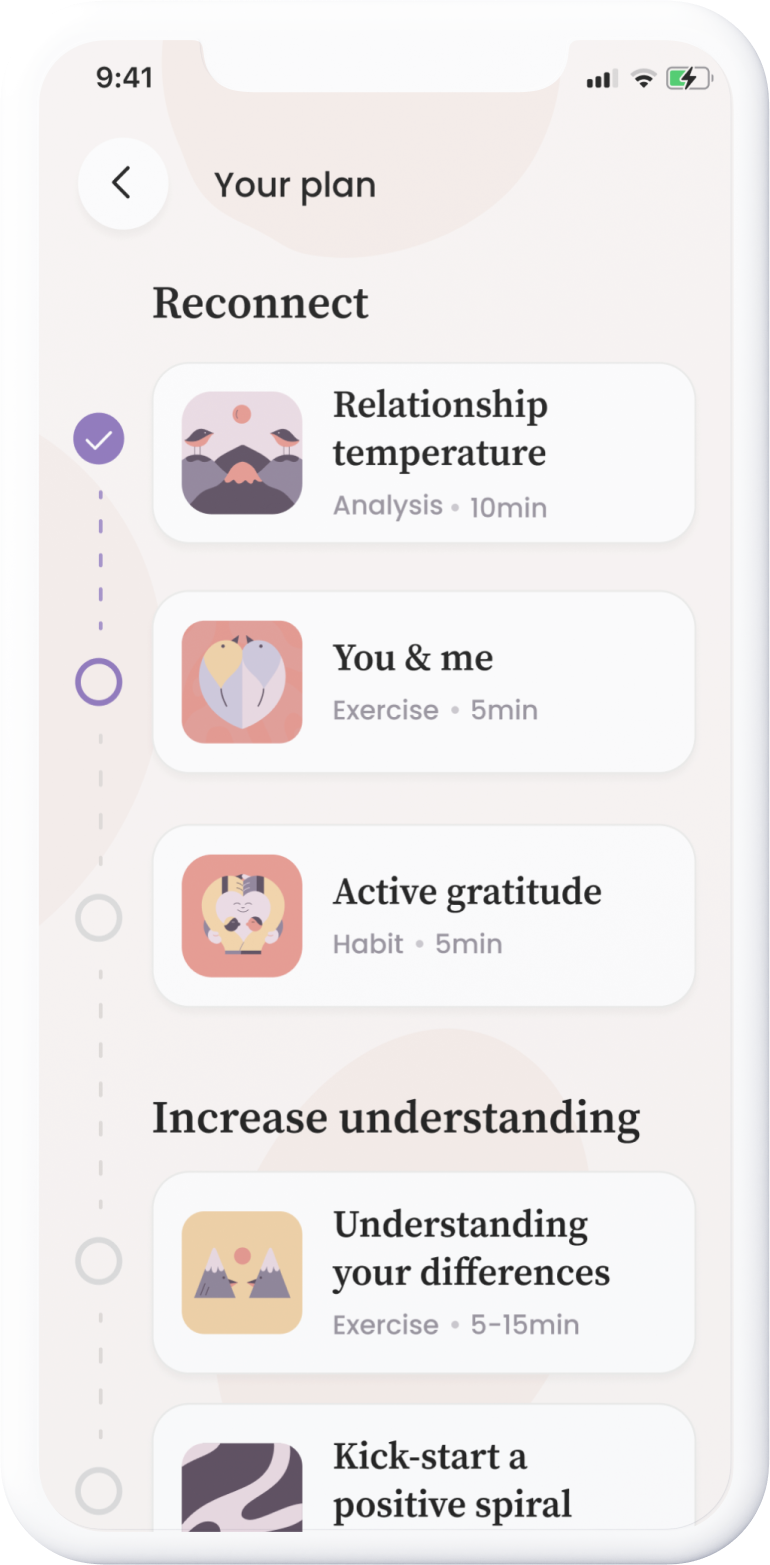
Do you ever feel like you and your partner are speaking different languages when it comes to love? That is a very common experience in relationships! Yes, love is a universal feeling, but it can be expressed in many different ways. By love languages, we mean these different ways of expressing love.
How do you express love to your partner? And how would you prefer your partner to express their love? We are not only different in our personalities, but also in what we appreciate our partner doing. This means that what your partner appreciates most that you do for them may not at all be what you yourself would have felt loved and seen by. No wonder it can be easy to get it wrong! By learning more about each other's love languages, you reduce the risk of misunderstandings or falling into the trap of giving each other what you yourself want instead (a classic in relationships!).
The meaning of love languages
"Love languages" is a concept that describes the different ways that people express and receive love. The term was coined by author Gary Chapman in his book "The Five Love Languages." Chapman identified five different love languages that people use to express and receive love: affirming words, quality time, receiving gifts, acts of service, and physical touch. According to Chapman's theory of 5 love languages, each person has a primary and a secondary love language.
As psychologists, we often encounter couples where different love languages can create problems in the relationship in various ways. However, we perceive Chapman's idea of Five Love Languages as somewhat simplified.
Your and your partner's love languages
It is human to show love in the way we prefer to receive love, but sometimes it can cause problems in our close relationships. Your partner may indeed be happy with the thoughtfulness when you buy flowers again, but would appreciate a long warm hug more. We have chosen to call these ways of showing love "Love languages" and we've expanded them into eight different ways of showing love.
We also believe that most people have more than one love language, and that preferences can vary greatly throughout life.
When love languages change throughout life
In the beginning of a relationship, we are often very appreciative of each other. We are curious and try to do more of what we think our partner wants, their love languages. After a while together, when the relationship becomes more everyday, it is common for the efforts to show each other affirmation to gradually decrease.
Perhaps both you and your partner are also changing when it comes to what makes you feel loved? An example is when a couple has a child together, it is then common for time together or to be relieved of household chores to become much more important. Earlier in life, it may have been hugs and kisses that were your love languages and made you feel most loved. A few years later in the relationship, a relieving everyday action, such as packing a gym bag or planning dinners, may be much appreciated. That's why the most important thing is to continue to be curious about each other and each other's needs.
8 common love behaviors or love languages
1. Verbal affirmation
To show appreciation in words. It can be saying "Oh, what a delicious meal you cooked" or expressing bigger gestures of love such as "I love you!"
2. Gifts
A bouquet of flowers on Friday, something your partner collects. To show love and appreciation through giving things.
3. Physical affection/closeness
Like a warm hug in the morning, stroking the cheek when sitting close together on the couch, or taking the initiative for sex.
4. Time together
To prioritize time together, from activities to conversations. Focus on togetherness and "us as a couple" (could also be family time if having kids together).
5. Presence
To fully listen without distractions, simply giving one's presence and mental focus.
6. Acts of service
Like making sure the coffee is ready when your partner wakes up or sneaking a small chocolate in the pocket before a tough work performance.
7. To get unburdened when needed
When you do the dishes even though it's your partner's turn when you see that your partner is tired or take over something that stresses your partner right now.
8. Giving each other emotional support
That you know you can tell your partner about what burdens you and get emotional support. But also to feel that you are your partner's confidant, the one your partner turns to when things get tough.
Give love in the way that works best for each of you
What did you discover when you looked at the different love languages? Do you feel most loved when surprised with breakfast in bed? When your partner tells that the food you cooked is fantastic? Is it when your partner sneaks up behind you and gives you a warm hug? Or maybe when in the middle of a busy week getting a text from your partner saying: "I'll make dinner tonight, don't feel like you have to rush home!"
After identifying how you differ and what you wish was different, it's time to take action. Make a plan for how you can do more of what your partner longs for or needs in the coming weeks. Your challenge is to get started, and to do it regardless of whether you feel like it or not. Positive change usually happens fairly quickly when both of you make efforts to give each other love.
If your partner isn't actively working in the relationship like you do, it can feel unfair to be the one doing it all without receiving it back. To get your partner to do more of what you appreciate, it's important that you show what you like. If you really like it when your partner takes initiative for joint activities, make sure to confirm directly that it's something that makes you happy, even if you're stressed about household chores in the moment and would rather that they take out the trash.
How do you feel in your relationship?
You can explore more about love languages and behaviors and other aspects of how your relationship is doing right now by taking the Relationship Status in the app Ally. The app is developed by us, licensed psychologists Clara Zelleroth and Helga Johnsson Wennerdal, to make the methods we use in couples therapy more accessible.
In the app you also get more guidance in how to show your partner more love. Try the habit "A Small Act of Love" or the exercise "Meeting Your Partners Needs".








